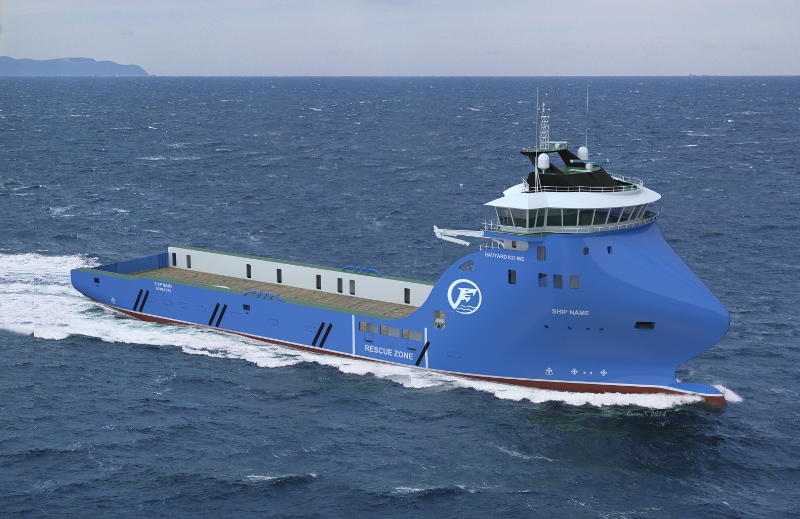Havyard has signed a contract for the construction of a Havyard 833 WE ICE platform supply vessel with Fafnir Offshore HF. The 294'x64 vessel will be equipped with a hybrid battery powered diesel-electric propulsion system developed in close cooperation with Norwegian Electric Systems.
The PSV will be designed by Havyard Design and Solutions in Fosnavaag and will be constructed at Havyard Ship Technology's yard in Leirvik in Sogn, Norway. The vessel will become newbuild number 126, has a contract value of just above NOK 350 million and is due to be delivered in July 2015.
Hull lines that have recently been employed in a smaller PSV design (Havyard 832 L WE) and for windmill service vessels are developed for reduction of fuel consumption and increased comfort for crew both in calm and heavy seas. Design of the superstructure makes it easy to maintain an ice-free ship in Arctic areas. The vessel is designed according to the latest environmental demands such as Clean Design class; it has low emission engines and is prepared for catalysts.
The hull design combined with hybrid battery power ensure that the PSV in given operations uses 30 to 40 percent less fuel than a traditional PSV, says Havyard.
A typical PSV has large variations within its energy needs depending on the operation being carried out. Going from A to B demands a certain need for energy and a different need is created when it is operating by an oil rig. Weather and wind conditions, waves and currents, also play their part in the swift variations of energy requirements.
"In traditional diesel-electric propulsion systems the diesel generators' load will vary according to the alternating energy needs," says Havyard design manager Arve Helsem Leine. "This means that diesel engines cannot constantly operate within a load area where these engines have the lowest possible fuel consumption."
With hybrid battery power you can constantly operate diesel generators at an optimal level, Leine explains. When energy demands vary you can either charge or discharge batteries, depending on whether the energy demands are lower or higher than the capacity of diesel generators in operation. Response time in relation to variation in power demands is also a lot shorter, so there is a quicker transfer of power to the ship's thrusters which ensures a more precise and secure positioning, for example in operations by an offshore rig, according to Havyard.
Key data Havyard 833 WE ICE:
Length: 89.7 m (294')
Breadth: 19.6 m (64')
Speed: 15 knots
Deck area: 1000 m2
Crew: 25 persons
Dead weight: 4250 tonnes




